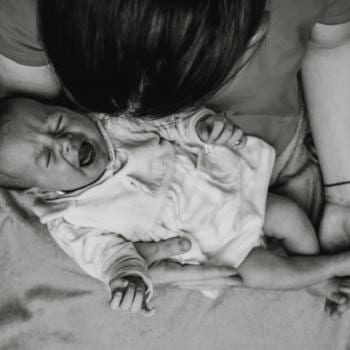You might consider this the flip side of the story I posted yesterday, courtesy Fr. Dwight Longenecker. He approached a wedding ceremony the same way I approach baptisms, by first reminding those present of what is really about to occur and underscoring the solemnity of the occasion.
The results, I think, speak for themselves:
As I conducted the rehearsal I explained about the Catholic view of marriage and discussed God’s love and our human loves and what the different elements of the ceremony actually meant. Then, the next day, as the wedding began I welcomed everyone and explained that we call this ceremony the “solemnization of marriage” and that, while it is a joyful event, it is also a solemn religious ritual. I explained that God is present here and I invited them to join in with the prayers and treat the ceremony as solemnly as possible so that it would be as beautiful and meaningful as possible for the bride and groom.
The marriage went on, and I noticed that everyone actually responded. People who had been casual and slouchy were standing erect and tall and silent. They had put their cameras away. They knelt reverently and listened carefully to the readings and homily. They were caught up in the ceremony–and this was especially noticeable amongst the non-Catholics.
Then when it came to the blessing of the rings the ten year old boy stepped forward with the rings pinned to a pillow and he was weeping freely. I looked across and saw that one of the beefy groomsmen was also wiping away a tear. The matron of honor was weeping and so was another bridesmaid. Now I know people always cry at weddings, but this was quite extraordinary and I sensed that what was making them weep was a real and tangible presence of God–and that their awareness of his presence was empowered by the fact that they took my words about the solemnity of the ritual seriously.
Amen. Read the rest. And then share it with a priest or deacon you know.












